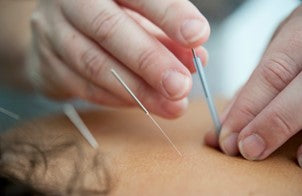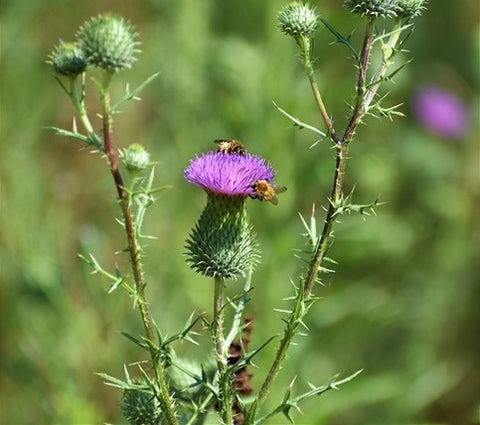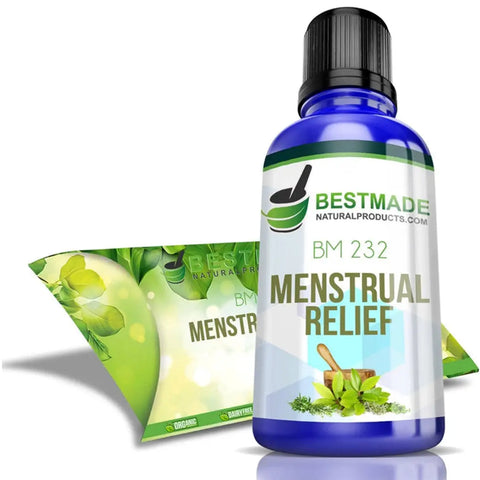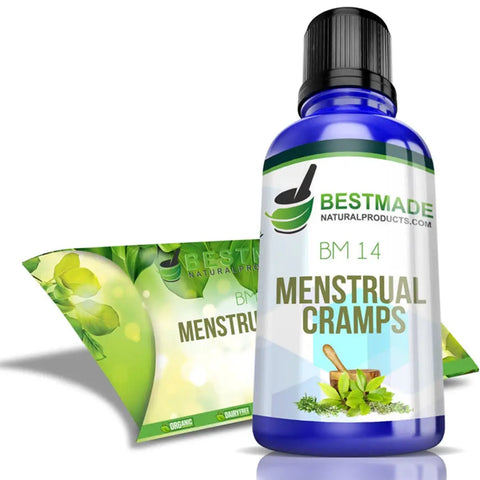Gentle Solutions: Natural Approaches for Relieving Ovarian Cysts Symptoms
BM36 is useful for myoma, leiomyoma, frequently increased menstruation, bleeding between periods, painful coitus, increased vaginal discharge, ovarian cyst, and swelling without pain in the lower abdomen.
Are ovarian cysts causing you discomfort?
For those who don’t know, ovarian cysts are fluid-filled sacs that develop within or on the surface of the ovaries, the reproductive organs in women responsible for producing eggs and hormones. These cysts can vary in size, ranging from tiny, undetectable ones to large cysts measuring several centimeters in diameter.
Ovarian cysts are quite common and often form as a normal part of the menstrual cycle. They can develop at any age, from puberty to menopause. Most ovarian cysts are benign (non-cancerous) and often resolve on their own without causing any symptoms or complications. However, some cysts can cause pain and discomfort or lead to complications.
In this blog, we’ll explore different types of cysts, causes, symptoms and diagnosis. Plus, we’ll discuss what are treatments for ovarian cysts and gentle natural remedies for symptoms relief.

Types of ovarian cysts
The two main types of ovarian cysts are functional cysts and pathological cysts.
Functional cysts are the most common ovarian cysts and are considered a normal part of the menstrual cycle. They develop as a result of the normal functioning of the ovaries. Functional cysts are further classified into two types:
- Follicular cysts: They form when a follicle in the ovary fails to release an egg during the menstrual cycle. Instead, the follicle continues to grow and becomes a cyst.
- Corpus luteum cysts: After the release of an egg, the follicle transforms into a structure called the corpus luteum. If the corpus luteum doesn't dissolve as expected, it can fill with fluid and form a cyst.
Functional cysts are usually small and go away on their own within a few menstrual cycles.
Pathological cysts are less common and are often caused by abnormal cell growth. They can include various types, such as:
- Dermoid cysts: They form from cells that produce eggs and can contain tissues like hair, skin, or teeth.
- Cystadenomas: These cysts develop from the outer surface of the ovary and can be filled with a watery or mucous-like fluid.
- Endometriomas: These cysts are associated with endometriosis, a condition where tissue similar to the lining of the uterus grows outside the uterus.
Depending on their size, symptoms, and potential complications, pathological cysts may require medical intervention.
Ovarian cysts symptoms
Ovarian cysts can vary in size, type, and location; not all cause symptoms. Many ovarian cysts are asymptomatic and may only be discovered during routine pelvic exams or imaging tests. However, when symptoms do occur, they can vary depending on the size, type of cyst, and whether it causes any complications. Common symptoms associated with ovarian cysts may include:
- Pelvic pain: it’s the most common symptom, ranging from a dull ache to sharp and sudden pain. The pain may be intermittent or persistent and can occur on one side of the pelvis or both.

- Bloating or abdominal discomfort: Some women with ovarian cysts may experience a feeling of fullness, bloating, or pressure in the lower abdomen.
- Changes in menstrual patterns: Ovarian cysts can sometimes affect the hormonal balance, leading to changes in the menstrual cycle. This may include irregular periods, heavier or lighter bleeding than usual, or spotting between periods.
- Pain during intercourse: Large or complex cysts can cause pain or discomfort during sexual intercourse.
- Frequent urination: If a cyst puts pressure on the bladder, it can increase the urge to urinate or frequent trips to the bathroom.
- Difficulty emptying the bladder or bowel: In some cases, larger cysts can press against the bladder or bowel, causing difficulty or discomfort during urination or bowel movements.
- Nausea or vomiting: Rarely, larger cysts or cysts that become twisted (ovarian torsion) may cause nausea or vomiting.
It's important to note that these symptoms can also be associated with other conditions, such as endometriosis, pelvic inflammatory disease, or urinary tract infections. Therefore, it's crucial to consult a healthcare professional for an accurate diagnosis if you experience any persistent or severe symptoms.
In some instances, ovarian cysts can lead to complications, such as rupture, torsion (twisting), or bleeding. These situations may cause sudden and severe pelvic pain, accompanied by symptoms like faintness, rapid breathing, or signs of shock. If you experience these symptoms, seek immediate medical attention.
Ovarian cysts causes
The exact causes of ovarian cysts can vary depending on the type of cyst. Some common causes and factors that can contribute to the development of ovarian cysts include:
1. Functional cysts are the most common ovarian cysts, forming part of the normal menstrual cycle. They develop when an egg's normal growth and release from the ovary are disrupted. The two primary functional cysts are follicular cysts and Corpus luteum cysts.
2. Hormonal imbalances, such as those associated with polycystic ovary syndrome (PCOS), can lead to the development of ovarian cysts. PCOS is a common hormonal disorder in women of reproductive age, characterized by multiple small cysts on the ovaries.
3. Endometriosis is when tissue that usually lines the uterus (endometrium) grows outside the uterus. The misplaced endometrial tissue can form cysts called endometriomas or chocolate cysts on the ovaries.
4. Ovarian hyperstimulation syndrome (OHSS): OHSS can occur as a complication of fertility treatments that involve using medications to stimulate the ovaries. This can lead to the development of multiple cysts on the ovaries.
5. Pregnancy: In some cases, functional cysts can develop during pregnancy. These are usually harmless and tend to resolve on their own.
It's important to note that while the above factors can contribute to the development of ovarian cysts, the exact cause of a cyst may not be identifiable in many cases. Ovarian cysts can occur in women of all ages, from puberty to menopause.
Ovarian Cysts Diagnosis
Diagnosing ovarian cysts typically involves a combination of medical history assessment, physical examination, and imaging tests.

Here are the typical steps involved in diagnosing ovarian cysts:
- Medical history assessment: Your healthcare provider will ask about your symptoms, menstrual history, previous diagnoses of ovarian cysts or other reproductive conditions, and any relevant medical history. Detailed information about your symptoms and their duration can help determine the cyst's potential cause and nature.
- Physical examination: During a pelvic examination, your healthcare provider will feel your abdomen and pelvic area to check for abnormal masses or tenderness. They may also perform a vaginal exam to evaluate the ovaries and assess the size and characteristics of the cysts.
- Imaging tests: Transvaginal ultrasound is the most common imaging test used to visualize the ovaries and detect ovarian cysts. It involves the insertion of a small probe into the vagina to obtain detailed images of the ovaries. Ultrasound can help determine the cysts' size, location, and characteristics and differentiate between different cysts. It can be done in another 6 to 8 weeks to ensure the cyst is gone.
In some cases, if further evaluation is needed or if the ultrasound results are inconclusive, your healthcare provider may order an MRI or CT scan. These imaging techniques can provide more detailed information about cysts and help distinguish them from other structures or abnormalities.
- Blood tests: In certain situations, blood tests may be performed to measure hormone levels, such as certain hormones like estrogen or hormones associated with conditions like polycystic ovary syndrome (PCOS).
Based on the results of these diagnostic steps, your healthcare provider can determine the presence, type, size, and characteristics of the ovarian cysts. They can also assess the need for further testing or recommend appropriate treatment options.
Ovarian Cysts Treatment
The treatment for ovarian cysts depends on several factors, including the type of cyst, its size, symptoms, and whether it's causing complications.
1. Watchful waiting: If the cyst is small, asymptomatic, and appears to be a functional cyst, your healthcare provider may recommend a watchful waiting approach. This involves monitoring the cyst over time through regular check-ups and imaging tests to ensure it resolves on its own without intervention.

2. Pain management: Over-the-counter pain relievers, such as nonsteroidal anti-inflammatory drugs (NSAIDs), can help alleviate pain or discomfort associated with ovarian cysts. However, pain medication only provides temporary relief and does not treat the cyst.
3. Hormonal birth control: Hormonal birth control methods, such as birth control pills, can help regulate hormone levels and prevent the formation of new cysts. They can also help shrink existing functional cysts and reduce the risk of recurring ovarian cysts. This option benefits women who experience frequent cysts or have hormonal imbalances.
4. Surgical intervention: Surgery may be necessary if the cyst is large, persistent, causing severe symptoms, or indicating a risk of complications.
BM232 may help with menstrual problems, including backache, premenstrual bloating feeling, cramps, fatigue, headache, dizziness, nausea, vomiting, and diarrhea.
It's worth noting that most ovarian cysts are benign and do not require treatment.
However, when it’s necessary, the choice of treatment will depend on various factors, including the characteristics of the cyst, your symptoms, your desire for future fertility, and your overall health. It's important to discuss the potential risks, benefits, and implications of each treatment option with your healthcare provider and any concerns or questions you may have.
Natural Approaches for Potential Symptom Relief
Heat therapy
Applying a heating pad or hot water bottle to your lower abdomen may help relieve pain and discomfort associated with ovarian cysts. It promotes blood circulation, relaxes the muscles, and reduces cramping. You can buy electric heating pads at your pharmacy.
Epsom salt bath
A warm bath with Epsom salts may help relax the muscles and reduce pain associated with ovarian cysts. Add 1-2 cups of Epsom salt to your bathwater and soak for 20-30 minutes. Epsom salts have been used for years to ease muscle pain.
Diet modifications
A nutritious, balanced diet can support overall health and help manage ovarian cysts. Focus on consuming whole foods, including fruits, vegetables, whole grains, lean proteins, and healthy fats. Avoid or limit processed foods, sugary snacks, and beverages, as they may contribute to inflammation. Some people find that reducing dairy, alcohol, caffeine, and red meat consumption can also be beneficial. Almonds are high in magnesium, so adding them to your diet might help with chronic pain.
Traditional Chinese Medicine (TCM)
TCM often uses acupuncture and Chinese herbal medicine to address various gynecological conditions, including ovarian cysts. TCM practitioners take an individualized approach and may recommend specific treatments based on your symptoms and patterns of imbalance.

Stress reduction
Chronic stress can contribute to hormonal imbalances and worsen symptoms associated with ovarian cysts. Engage in stress management techniques such as meditation, deep breathing exercises, yoga, or hobbies that help you relax and unwind.
Exercise
Regular physical activity can help regulate hormone levels, improve circulation, and support overall well-being. Engage in low-impact exercises like walking, swimming, or yoga. However, avoid strenuous activities that may exacerbate your symptoms. Consult with your healthcare professional before starting any new exercise regimen.
Essential oils
Some essential oils, such as lavender, clary sage, and frankincense, are great home remedies for cysts. They may have potential benefits in managing pain and reducing inflammation. However, you must use essential oils cautiously and always dilute them properly before use. Castor oil for ovarian cysts can also be beneficial. Consult with a qualified aromatherapist or healthcare professional for guidance.
BM120 is useful for PMS problems, including bloating in the breasts and lower abdomen, headache, suprapubic cramps, backache, nausea, and vomiting.
Herbal remedies
Certain herbs may have potential benefits in the treatment for an ovarian cyst. Examples of herbs that are sometimes used to manage ovarian cysts include:
- Chasteberry (Vitex agnus-castus): Chasteberry is a popular herb used for hormonal balance. It may help regulate hormone levels, promote regular menstrual cycles, and potentially reduce the size of ovarian cysts. It is available in supplement form or as a tincture.
- Dong Quai (Angelica sinensis): Dong Quai is commonly used in Traditional Chinese Medicine to support women's health. It may help regulate hormone levels, promote blood circulation, and reduce pain associated with ovarian cysts. It can be consumed as a tea or taken in capsule or tincture form.
- Black Cohosh (Actaea racemosa): Black Cohosh is known for its potential benefits in managing hormonal imbalances and menopausal symptoms. It may help regulate estrogen levels and support overall reproductive health. It is available as a supplement or tincture.
- Red Raspberry Leaf (Rubus idaeus): Red Raspberry Leaf is often used to support reproductive health in women. It may help regulate menstrual cycles, reduce cramping, and support the health of the uterus and ovaries. It is commonly consumed as a tea.

- Milk Thistle (Silybum marianum): Milk Thistle is a liver-supporting herb that may help detoxify the body and support hormonal balance. It may be beneficial in cases where ovarian cysts are related to hormonal imbalances or liver dysfunction. It is available as a supplement or tincture.
- Turmeric (Curcuma longa): Turmeric is a powerful anti-inflammatory herb that may help reduce inflammation associated with ovarian cysts. It can be consumed as a spice in cooking or taken as a supplement.
Please remember, herbal remedies should be used under the guidance of a qualified herbalist or healthcare professional. They are not a substitute for medical advice or treatment.
Homeopathy
BM36 is useful for myoma, leiomyoma, frequently increased menstruation, bleeding between periods, painful coitus, increased vaginal discharge, ovarian cyst, and swelling without pain in the lower abdomen.
Here are a few homeopathic remedies that are sometimes used for ovarian cysts:
- Sepia: This remedy is often indicated for ovarian cysts accompanied by irregular or suppressed menstrual cycles, pelvic pain, and a sense of heaviness or dragging sensation in the pelvis. Women who require Sepia may also experience mood swings, irritability, and fatigue.
- Lachesis: This remedy is typically used for left-sided ovarian cysts and is indicated when there is severe pain, tenderness, and sensitivity in the ovary. Women needing Lachesis may also have hot flashes and palpitations and experience worsened symptoms before menstruation.
- Apis Mellifica: This remedy is commonly used for ovarian cysts associated with a sensation of stinging or burning pain, along with swelling and tenderness in the affected area. Cold applications may relieve the pain, and the person may feel worse with heat or pressure.
- Belladonna: Belladonna is indicated when there is intense, throbbing pain in the ovaries, accompanied by heat and redness. The person may have a flushed face, dilated pupils, and a high fever. The pain may worsen with jarring movements or touch.
- Pulsatilla: This remedy is often prescribed for ovarian cysts accompanied by irregular menstrual cycles, shifting pain from one side to the other, and a desire for consolation and reassurance. The person may also have symptoms of emotional sensitivity and weepiness.
It's important to remember that homeopathy is a highly individualized form of treatment, and the choice of remedy will depend on the totality of symptoms and each person's unique health issues.
BM14 may help your body deal with amenorrhoea, dysmenorrhoea, and cramps in the pelvic region. Useful for painful menses in young women.
The Bottom line
Most ovarian cysts are very common, benign, and will go away on their own after a few weeks.
Different home remedies might help ease the symptoms, but there is still no proven way of preventing future cysts.
If you feel persistent pain or discomfort despite the home remedies you are using, contact your doctor to rule out more serious conditions.







Laissez un commentaire